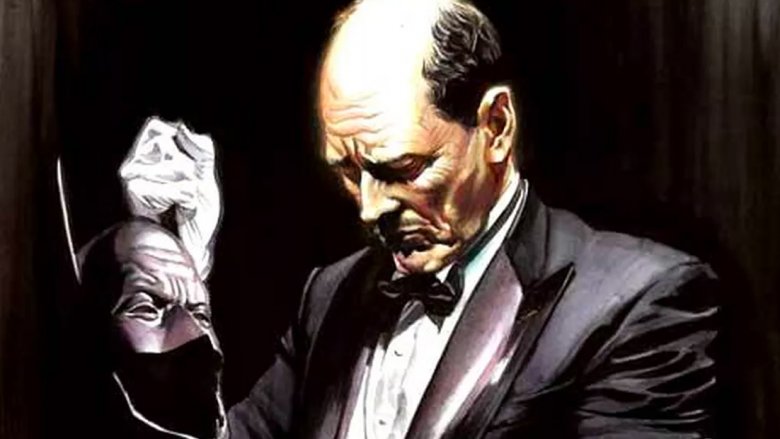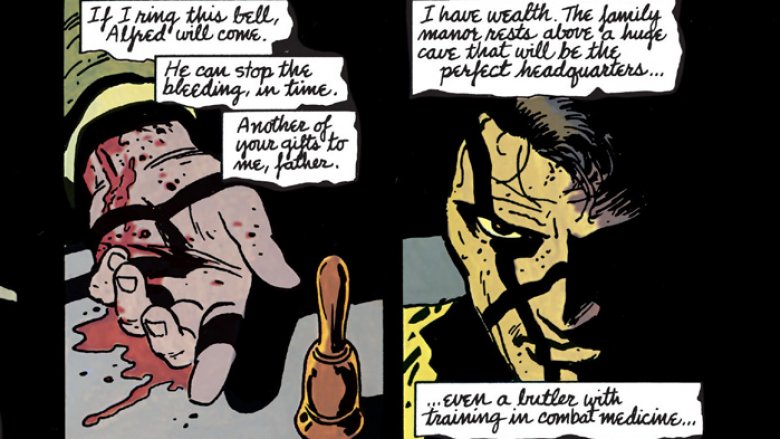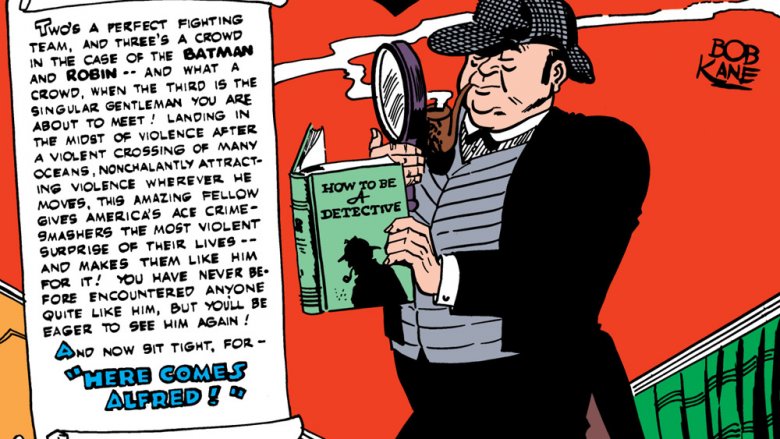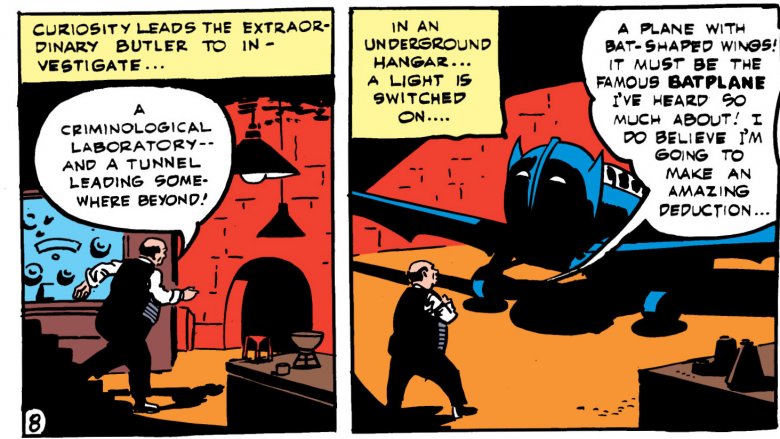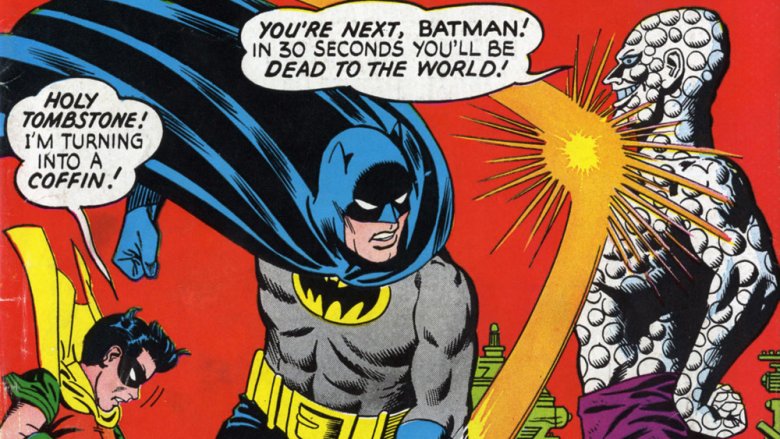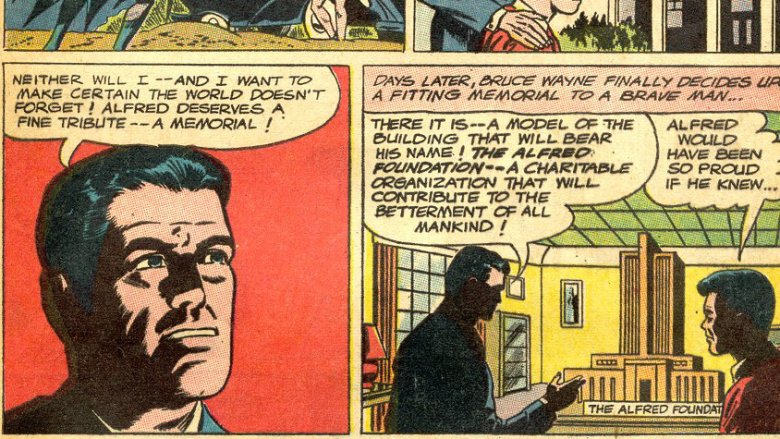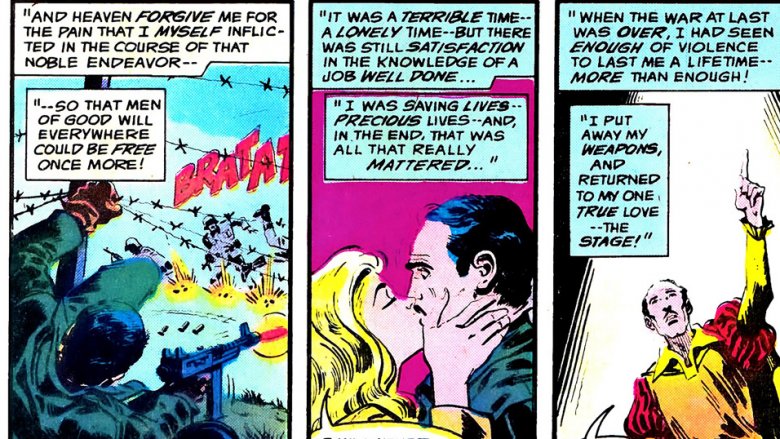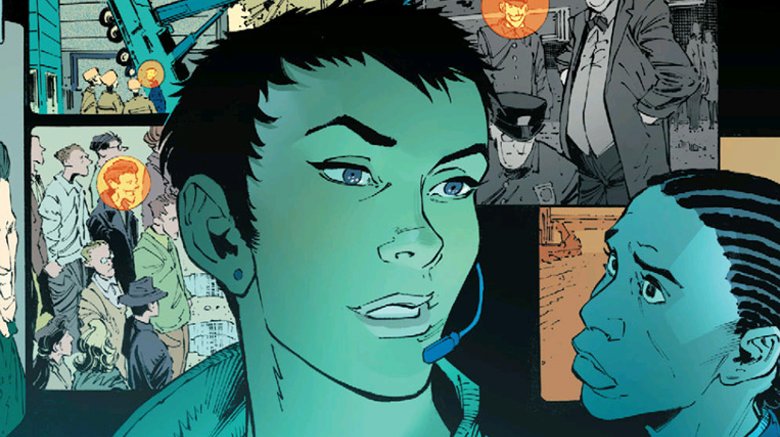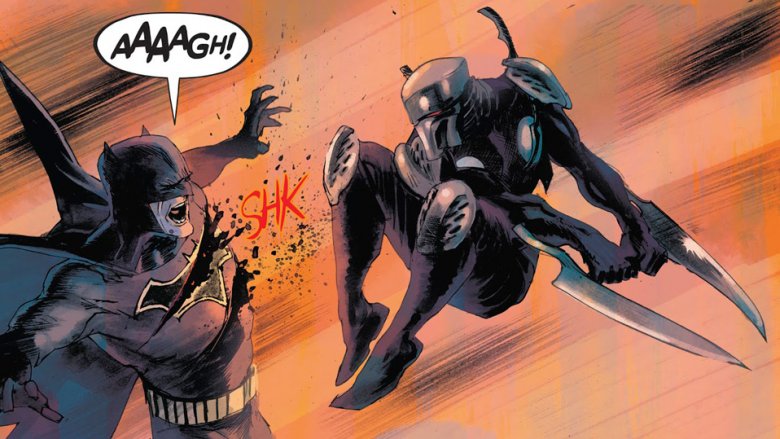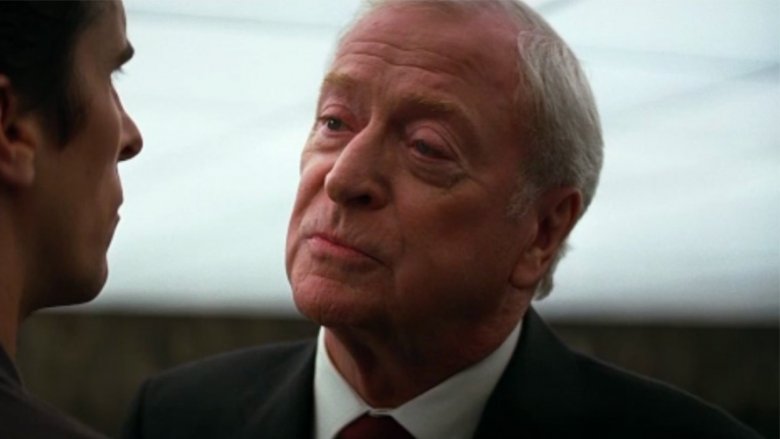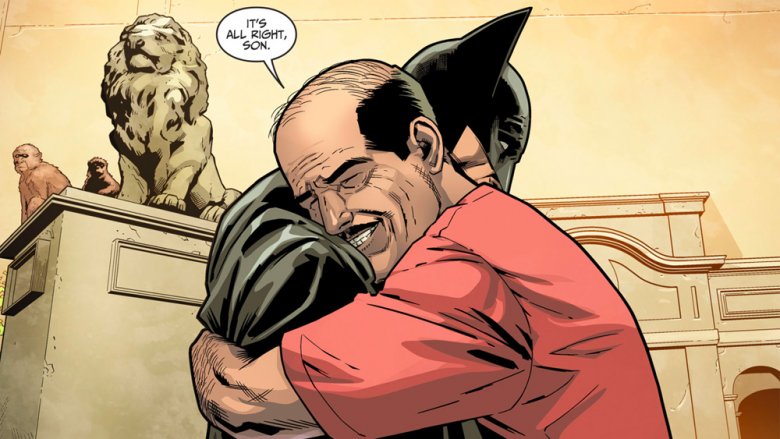What To Know About Alfred Before He Gets His Own Show
Of all the characters in Batman's considerable supporting cast, Alfred Thaddeus Crane Pennyworth is one of the easiest to overlook. After all, he's just Batman's butler, right? He's the guy who spends his days dusting off the giant penny in the Batcave. How interesting can he possibly be?
The answer, it turns out, is "very." With over 75 years of appearances in the core cast of the Dark Knight's adventures, Alfred has a history that's almost as compelling as his superheroic employer's. From his days as a secret agent to his brief, bizarre tenure as Gotham City's strangest crime boss, here are the things you need to know about the Batman's personal gentleman's gentleman, Alfred Pennyworth — all rounded up just in time to give you a primer on the man before Pennyworth, the new TV series about Alfred's exploits, arrives on the airwaves in 2019.
The First Ally
From his first appearance, Alfred has been a central character to the Batman mythos. If nothing else, he gave Batman and Robin an interested party that they could explain their increasingly convoluted stories to, and provided a relatively normal person's perspective on the adventures of the World's Greatest Detective. In the modern era, though, his importance has grown exponentially, to the point where without Alfred, there wouldn't even be a Batman.
In the first chapter of Batman: Year One — unquestionably the most influential version of Batman's origin story — Frank Miller and David Mazzucchelli recreate the famous scene of a bat crashing through Bruce Wayne's window. Like before, this inspires him to take on the creature's fearsome form as his own in order to more effectively battle against the superstitious, cowardly lot that is the criminal underworld. The difference this time, though, is that this comes after Bruce's first attempt at fighting crime in a more traditional disguise, leaving him beaten up and bleeding out after being shot and stabbed.
Fortunately for Bruce, his inheritance included "a butler with training in combat medicine." All he had to do was ring a bell to summon Alfred so he could patch him up. As longtime Batman scribe Grant Morrison would later write, the "first truth of the Batman" was that he always had allies, and Alfred was there from the very first seconds.
The original Alfred
In reality, Alfred was actually a relatively late addition to the Batman mythos. He first appeared in 1943's Batman #16, and while that was only about four years after Batman's debut, it also comes well after more well-known characters. Commissioner Gordon, for instance, appeared right alongside Bruce Wayne in the first Batman story from Detective Comics #27, and Alfred's arrival came after the debut of Robin, as well as longstanding villains like the Joker and Catwoman.
It's worth noting that the original appearance of Alfred was as a... well, a "gentleman of carriage," as it were, with a much heavier frame than the look we'd get to know over the next eight decades. The reason for the change, which came a few months later in 1944, was one of the first examples of comics being influenced by their mass-media spinoffs. The character of Alfred was likely created specifically for the 1943 Batman serial movies, where he was played by the thin, bald, mustachioed William Austin.
When Don Cameron and Bob Kane introduced him to the comics, the serials weren't out yet, so they went with a more stereotypical English butler design, and only corrected it once they knew what Austin looked like. Of course, that required an in-continuity explanation for the change, so in the comic, it all happened because Alfred went to a weight-loss camp on his vacation, and worked out so hard that he lost his hair. No, really.
The bumbling butler
One thing that marks the modern portrayal of Alfred is that, like Batman himself, he's the model of crisp, well-practiced efficiency. He's so skilled, in fact, that he's even briefly filled in for Batman himself — although that's mostly limited to wearing the suit rather than exchanging punches with the Riddler.
That wasn't always the case, however. In his original appearances, Alfred was a comic relief character whose dreams of becoming a detective himself were always played for laughs. While he was perfectly competent at the more butler-oriented part of his job, which mostly involved keeping the Dynamic Duo's capes clean and ironed, his crimefighting aspirations often ended in disaster. He'd occasionally bumble into helping, but also caused plenty of problems for Batman and Robin, and wound up having to be rescued from crooks on more than one occasion.
One of the elements that has remained more or less unchanged from his first appearance, however, was the idea that before finding his calling in domestic service and amateur sleuthing, Alfred had been an accomplished actor in London. He only entered Bruce Wayne's service when his father, Jarvis, asked him to on his deathbed, leading Alfred to give up his dreams of Shakespearean fame and accidentally become a crucial component in the greatest crimefighting team ever assembled.
The Outsider
Alfred's loyalty to Batman has always been unquestionable and impeccable... you know, except for the time that he died and was raised from the grave as a mutant crime boss who terrorized Gotham City for two years before his identity was finally revealed.
That happened in the swingin' '60s, and began in Detective Comics #368 with Alfred's shocking death. As Batman and Robin went up against a gang of mundane crooks, they were almost smashed by a trap involving a falling boulder, but Alfred arrived in the nick of time and shoved them out of the way, being crushed to death in their place. The good news (sort of), was that Alfred's smashed-up body was only mostly dead, and his body was dug up by a grave-robbing scientist who needed a test subject for his cellular regeneration ray, because comics. The ray worked, but in addition to healing Alfred's body also mutated him into a white-skinned, welt-covered monster and warped his mind so that his love for Batman and Robin was turned into pure hate. He took the name "The Outsider," and from 1964 to 1966, he was the mastermind behind several crimes, including the debut of the hulking Blockbuster.
Eventually, Batman and Robin tracked the Outsider to his laboratory lair, and — after the Outsider used another mad science ray to literally turn Robin into a coffin, because at this point, why not — they reversed his transformation and brought Alfred home again.
The Alfred Foundation
By the standards of DC comics in the '60s, in which every comic usually included three complete stories, the saga of the Outsider was a genuine epic. Starting with Alfred's apparent death, the whole thing was spread out over 29 months before the Outsider's identity was revealed and wrapped up, and while it wasn't featured in every issue, it was definitely there weaving its way through otherwise unrelated stories.
By October of 1966, though, it was over — which, not coincidentally, came just in time for the second season of the smash hit Batman TV show, in which Alan Napier's Alfred played a major role. With the exception of a single story in 1985 when the Outsider returned to menace Batman's new team of sidekicks, the Outsiders, the whole thing was forgotten... except for one lasting piece of the puzzle.
When Alfred died, Bruce Wayne founded a charity in his memory called, of course, the Alfred Memorial Foundation. The use of his first name might seem a little weird, but, well, at the time Alfred didn't really have a last name — he'd used "Beagle" for a bit during the Golden Age, which would later be retconned as his stage name, and "Pennyworth" wouldn't show up until 1969. Either way, once he was resurrected, Batman would decide to rename it as the Wayne Foundation, presumably because he remembered that his parents getting murdered in front of him was kind of a big deal.
Butler, tailor, soldier, spy
In his first appearance, Alfred had already mastered two different jobs, as an actor and a butler. As time went on, though, his past was further explored, and it was revealed that he had a pretty important third talent, too: he was a highly decorated soldier who had fought alongside the French Resistance in World War II.
In Untold Legend of the Batman, he's shown to be helping refugees flee from Nazi-occupied territory, and even being part of a team that liberated concentration camps, blowing away Nazis with a submachine gun. There was also a more important element to that part of his past, at least as far as the ongoing drama of the present day was concerned: his time in the war had also given him a daughter that he didn't know about until she showed up in America with a pistol to get revenge for her mother's murder.
The mother in question was Mademoiselle Marie, a heroine who was occasionally featured in DC's line of war comics. She was an icon of the French resistance, battling the occupying Nazis in a beret and fishnets and recruiting a team of soldiers from the allied nations to help her. Alfred, of course, was one of them, and the two characters fell in love shortly before the end of the war. Unfortunately, Mlle. Marie was seemingly killed in 1945, leaving Alfred heartbroken, and while she survived, she never told them about their child, Julia Remarque. Instead, Marie wound up telling her Alfred's name on her deathbed, giving her the idea that he was the murderer, and not her dad.
Julia Pennyworth
The idea of Alfred having a long-lost daughter made it into the current continuity, too, along with those same issues of being abandoned by her father once again. This time, though, she had some anger stemming from a whole other problem. It turned out that Alfred's knack for playing the role of a manservant to a dilettante playboy was good enough to fool her, giving her the idea that her father had wasted his potential. Julia, on the other hand, was a trained operative for the British government who went undercover to bring down international crime lords.
Eventually, Julia learned that her old man's line of work had a lot more in common with hers than she'd originally thought, and wound up joining the family business. While she briefly worked for Batman himself under the codename "Penny-Two" (Alfred being Penny-One, of course), she would eventually find herself operating as the coordinator for Batwoman instead.
The (other) Dark Knight
Alfred's military past has made it into more recent comics as well, but this time there was a very strange twist. In addition to being a commando in Britain's Special Air Service, Alffred was also recruited by MI5 for a special project called the "Nemesis Program."
The idea was that Alfred would be trained as a secret operative who would operate completely independently under a mask, licensed to kill by Her Majesty's Secret Service, with his only contact being a supervising agent called Briar. Unfortunately for the Nemesis Program, Alfred discovered that Briar's efforts to create the perfect agent involved severing any ties to the outside world, which in this case meant murdering Alfred's father. Needless to say, the young Sgt. Pennyworth was definitely not cool with that, and bailed on the Nemesis Program in order to take up his father's old position as butler to the exceedingly happy Wayne family, finally getting away from terrible things like parents getting murdered. That, uh, didn't work out the way he wanted.
And neither did the Nemesis program. Having lost Alfred, Briar went with the next best thing: a clone, raised and trained from birth to operate as an unstoppable assassin whose first targets would be Alfred and his caped employer. Oh, and the codename for this masked servant of the crown? The "Dark Knight," of course. What else would it be?
Special Alfred Services
They haven't quite gotten to masked super-clones just yet, but in more recent interpretations, Alfred's past ties to the Special Air Service have become increasingly important, especially when he was brought out of the world of comics and into other media.
The most notable example came in Christopher Nolan's Dark Knight trilogy, featuring Michael Caine in the role of Batman's closest confidante. In addition to helping to construct the identity and equipment that he'd take as Batman, Alfred was also able to provide some insight into the Joker's motivations in The Dark Knight by relating a story about how in his experience, "some men just want to watch the world burn." Here, it's implied that his past might be more mercenary than military, as he mentions that his "friends" were in Burma — a country well known for being the site of a civil war that's been going on in one form or another since 1948 — doing some sketchy-sounding work "for the local government." Whether this was authorized or not, this is definitely an Alfred who has seen some stuff in his time.
That same characterization was brought over to the short-lived Beware the Batman cartoon as well. In addition to marking an attempt to only use villains who had never been featured on a Batman show before, the show also involved a bigger, tougher, gun-toting Alfred with a much less posh-sounding accent. According to series writer Mitch Watson, this version was loosely based on Jimmy Malone, Sean Connery's character from The Untouchables. Truly, the age of Badass Alfred was upon us.
Butler, Valet... Father?
Alfred's most prominent role in the Batman story is, of course, that of the surrogate father. In recent comics, he's even taken to referring to Bruce Wayne as his son, and he's right to do so. He was, after all, the one who raised him once his parents were dead. And... that's kinda weird, right?
In the Silver Age, the explanation of what happened to Bruce Wayne in the years between his parents' murder and his career as Batman was that he was raised by his uncle Phillip, but more modern interpretations went with the idea that with the death of Thomas and Martha Wayne, their son was left completely without a family. Alfred was already in place as a surrogate father, so one of Frank Miller's contributions to the Batman mythos was to codify the idea that this extended to actually raising Bruce as his guardian.
The thing is, it is extremely doubtful that any version of family court, even one built for a world where a flying man from the planet Krypton can arrest a space robot with a shrink ray, would award sole custody of a child who stood to inherit billions of dollars to the family's butler. Of course, that's one of those superheroic plot points that it's better off to not think about, but it seems pretty clear that there was a lot of bribery going around the Gotham City Family Court system back in the day.
